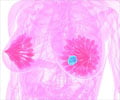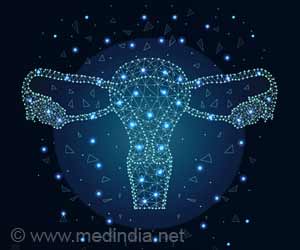Biological markers in triple negative breast cancer (TNBC) that are linked to resistance to chemotherapy treatment are discovered by researchers.

The research team used an innovative analytic approach called “microscaled proteogenomics” that they previously developed (Satpathy et al, 2020) to analyze tumor biopsies taken from TNBC patients prior to treatment with carboplatin and docetaxel combination chemotherapy. Data from standard DNA and RNA sequencing approaches were integrated with mass spectrometry-based proteomics and phosphoproteomic analyses to derive more complete molecular portraits of treatment-responsive versus treatment-resistant tumors.
Triple Negative Breast Cancer: New Insights
“The proteomic analysis of pretreatment biopsies uniquely revealed metabolic pathways that were associated with resistance to treatment, including fatty acid metabolism,” said Anurag, also a member of Baylor’s Dan L Duncan Comprehensive Cancer Center. When the team considered both proteomics and gene expression data together, they observed that sensitivity to chemotherapy was marked by higher DNA repair signatures, interferon gamma signaling and immune checkpoint components. These data suggest a multi-omics predictor for chemotherapy response is within reach.The team then conducted analyses that triangulated treatment response, chromosomal deletion or gain and concordant decreases or increases in mRNA and protein expression. This led the team to determine that a deletion on chromosome 19, located in a region called 19q13.31-33, was associated with resistance to chemotherapy treatment. Of the hundreds of genes deleted in this location, expression of the DNA ligase gene LIG1 was one of the mostly consistently suppressed genes at both the mRNA and protein level. In model systems, and in other TNBC data sets, loss of expression and/or deletion of LIG1 was associated with selective carboplatin resistance and poor clinical outcome.
Dr. Matthew Ellis, a McNair Scholar at Baylor and director of the Lester and Sue Smith Breast Center at the time of this research, and Dr. Steve Carr, senior director of the Proteomics Platform and an institute scientist at Broad, who together orchestrated the analysis, said, “This groundbreaking study clearly reveals the power of combining microscaled proteogenomic analyses with careful clinical research to produce new insights into the nature of cancer.”
LIG1 is a critical component of lagging strand DNA synthesis that connects Okazaki fragments (small DNA segments that must be connected to complete the synthesis reaction). Interestingly, the lagging stand DNA polymerase POLD1 is frequently co-deleted with LIG1, suggesting a multigenic mechanism is in play. Lagging-strand synthesis components are generally considered essential to cellular survival but here reductions in the levels of these enzymes are associated with marked chromosomal instability in multiple cancer types and selective carboplatin resistance in TNBC. Mechanistic studies are underway to determine how the genome is destabilized and how tumors with LIG1 deletion can be more effectively treated.
Source-Eurekalert











